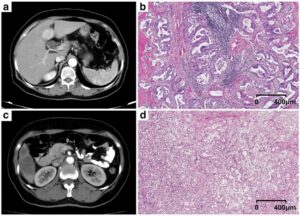The need for diagnostic images is rapidly exceeding the capacity of available specialists worldwide, and more acutely so in developing countries where access to healthcare remains challenging. AI is showing promise in TB diagnosis, but it could do much more, provided incentives went in the right direction, recent initiatives in Uganda have shown.
Shortage of radiologists is a worldwide phenomenon, but the lack of specialists is much more pronounced in developing countries. In Uganda, only 20 doctors signed up for radiology residency in 2018 and the radiologist-to-population ratio was approximately 1:1,600,000; and it was even lower in Malawi – 1:8,000,000.
With AI, possibilities are emerging to fill in this vertiginous gap and tend to these populations’ medical imaging needs. There are a number of ongoing initiatives that can help in simple image acquisition and interpretation when no qualified staff is available.
Tuberculosis diagnosis
Incidence of tuberculosis (TB) in low-income areas is high. TB kills more people worldwide than any single infectious disease, mainly because it remains poorly diagnosed. In 2018 the World Health Organisation estimated that 10 million incident TB cases were not diagnosed and reported.
Chest x-ray is sensitive and cost-efficient, and it is recommended for TB detection. But many diseases exhibit similar radiological patterns, so the method is highly dependent on image interpretation.
In low-resource settings without sufficient qualified physicians to interpret every chest x-ray on time, TB diagnosis is often delayed, with serious impact on patient prognosis. This is where AI can help fill the gap, according to Dr. Jacob Visser, Head of Imaging IT and Value-based Imaging at the Department of Nuclear Medicine and Radiology of Erasmus Medical Centre in Rotterdam, the Netherlands.
“For those situations, AI can do what radiologists cannot do. You need chest x-ray to examine patients and determine whether they have TB or not. And in that case, it’s very helpful to have an AI-fed software that can screen the chest x-ray for that specific pathology,” he said.
Deep neural networks offer opportunities to develop solutions to help to analyse digital chest radiographs for TB-related abnormalities.
Several products using deep learning are available on the market, including CAD4TB by Delft Imaging Systems in the Netherlands, Qureai in India and Lunit INSIGHTS in Korea. As of October 2019, evidence had only been gathered for the CAD4TB solution, but the potential for addressing current shortcomings is here.
Reducing maternal mortality
According to the International Labour Organization, rural maternal mortality is 2.5 times higher than urban maternal mortality, and the rural population in Africa is the most deprived of health coverage and access to needed healthcare (2).
There is no doubt that AI could help improve the outcome of pregnancy and birth in this setting, according to Richard Malumba, a health researcher at Makerere University in Kampala, Uganda.
“These areas lack the staff that can read the images. Best-case scenario, there is an expert who shares his or her knowledge remotely to interpret these images. If we had AI, the report would be generated automatically and presented to the mother. It would save time, hassle and, most importantly, lives,” he said.
The problem is that some of these areas don’t even have an ultrasound device. But this could be solved by using and plugging in the ultrasound capacity combined with AI directly on mobile phones. Phones also consume less electricity, which can be hard to come by in these areas.
With AI, it would be possible to acquire and interpret key findings on ultrasound scans, such as head measurements to determine the foetus’ age, without the help of a specialist.
“You could make images from ultrasound and train your module to recognise what is your model for that age, and your module could suggest with AI which measurement is normal and which isn’t,” Malumba added.
Foetal hydrocephalus, a condition that can only be confirmed with the help of diagnostic imaging, is one of the topics currently tackled by Malumba at the AI lab of Makerere University, where he and other researchers are studying potential applications for AI through different projects across the university.
Prostate cancer and education projects with Google
There is a budding interest in AI in Uganda, a country with 80% of its population living in a rural area. Makerere University has taken the lead with the AI lab, which has recently worked with the Ernest Cook Ultrasound Research and Education Institute (ECUREI), the university’s ultrasound-training institute, on a tender on AI in prostate cancer.
The project proposes training AI software to recognise normal and abnormal patterns in prostate cancer on MRI to help residents learn how to diagnose prostate cancer vs. a normal prostate.
Once written, the proposal will be submitted to Google to receive funding. “Google has shown a keen interest in supporting our institution to undertake projects in AI that are beneficial to Africa, and so we are writing up concepts in this regard. We need large training datasets to train the model. Google would provide us with the datasets and the necessary horsepower,” said Professor Michael Kawooya, Professor of Radiology at ECUREI and Professor Emeritus at the Makerere University College of Health Sciences.
A little while ago, the university submitted another proposal on how to use machine learning to teach medical students at the point of care directly on the tablet to the same company. The project was refused, but the potential remains interesting.
“Interactive AI can help a teacher at point of care to teach a group of students, and get assignments and feedback from them. Even if a teacher is seeing patients, he or she can teach without being interrupted,” Kawooya said.
A major obstacle to implementing AI in radiology practise is its dissuasive cost, with all the expenses related to hardware, infrastructure, training, supervision and financial support and supportive public health policies.
In a low-resource setting, that cost can simply become unsustainable. The participation of a tech giant in funding IT components, datasets elaboration and software testing costs is, therefore, an interesting option, but must be valued against potential pitfalls – patient confidentiality included.
According to a very recent report, Google abruptly cancelled a project with the U.S. National Institutes of Health in 2017, realising personal data could be exposed after making 100,000 x-rays public (3).
To help guarantee that AI is implemented properly, the support of institutions like the ESR is of the utmost importance. “The ESR could have a capacity for assisting someone who comes up with a concept, to help them develop and sponsor their idea. Specifications for hardware and software compatibility and usefulness with equipment would also be welcome. Scientific societies should take on a leading role here,” Kawooya concluded.
(1) https://www.nature.com/articles/s41598-019-51503-3
(2) https://www.ilo.org/wcmsp5/groups/public/—dgreports/—dcomm/—publ/documents/publication/wcms_604882.pdf
(3) https://www.washingtonpost.com/technology/2019/11/15/google-almost-made-chest-x-rays-public-until-it-realized-personal-data-could-be-exposed/













